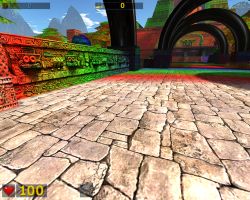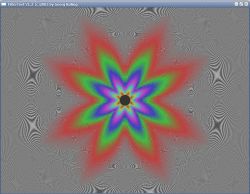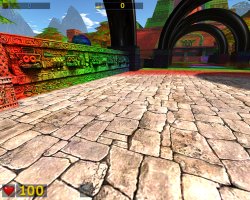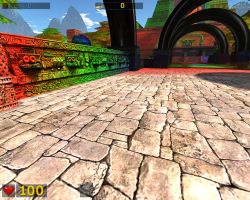Texture Filtering Image Quality - 4X, 8X and 16X aniso
Texture filtering image quality is analysed to make sure it's up to par with what the hardware is supposed to be capable of.4X anisotropic filtering
90 and 45° angles are those filtered at full 4X with everything else receiving 2X.
8X anisotropic filtering
The angle adaptive nature of ATI's filtering algorithm is most evident in the following 8X and 16X modes, with the flower-like shape giving the game away. Easy angles for the hardware to calculate are filtered most aggressively.
16X anisotropic filtering
See above.















